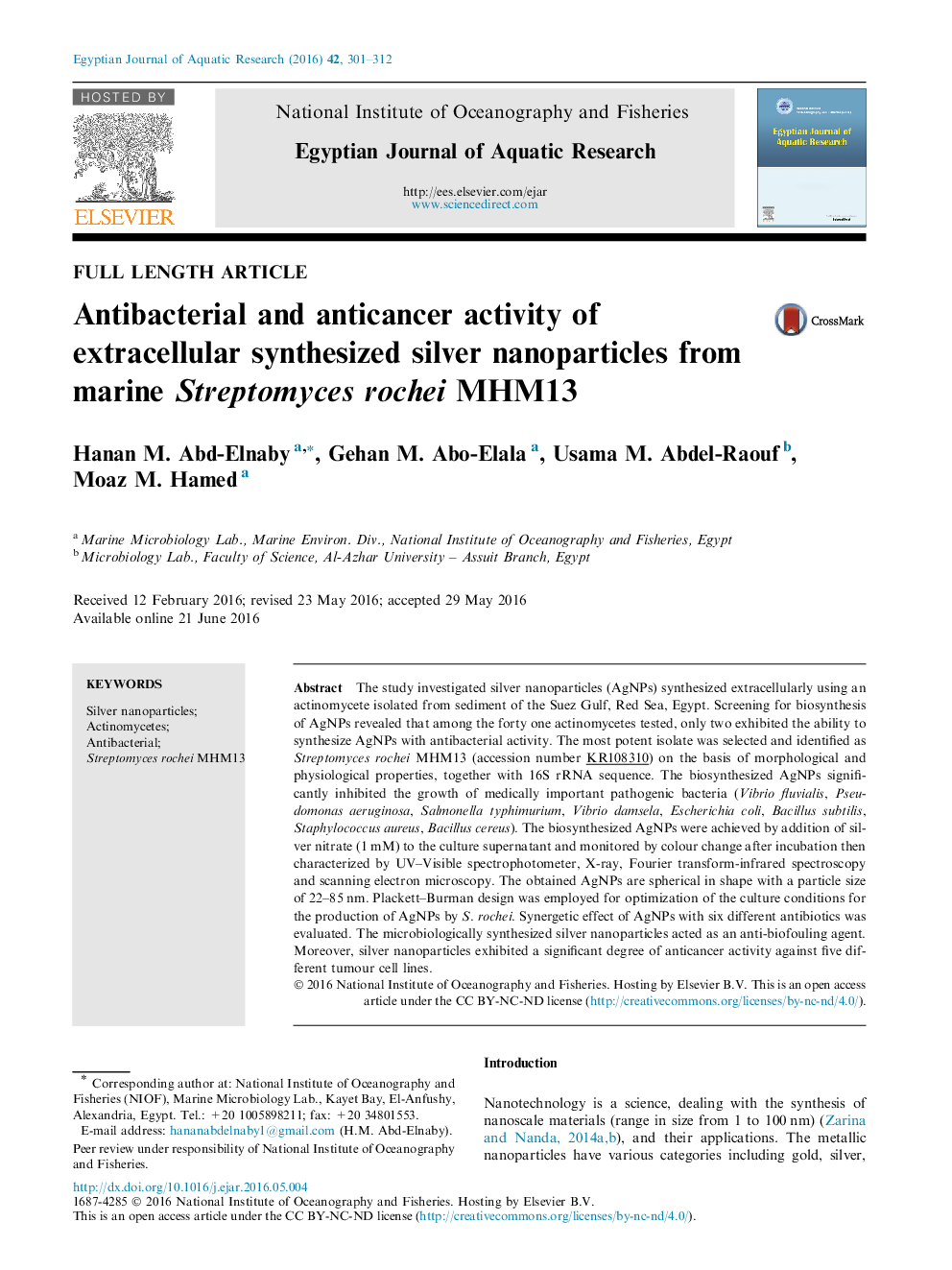| Article ID | Journal | Published Year | Pages | File Type |
|---|---|---|---|---|
| 4493025 | The Egyptian Journal of Aquatic Research | 2016 | 12 Pages |
The study investigated silver nanoparticles (AgNPs) synthesized extracellularly using an actinomycete isolated from sediment of the Suez Gulf, Red Sea, Egypt. Screening for biosynthesis of AgNPs revealed that among the forty one actinomycetes tested, only two exhibited the ability to synthesize AgNPs with antibacterial activity. The most potent isolate was selected and identified as Streptomyces rochei MHM13 (accession number KR108310) on the basis of morphological and physiological properties, together with 16S rRNA sequence. The biosynthesized AgNPs significantly inhibited the growth of medically important pathogenic bacteria (Vibrio fluvialis, Pseudomonas aeruginosa, Salmonella typhimurium, Vibrio damsela, Escherichia coli, Bacillus subtilis, Staphylococcus aureus, Bacillus cereus). The biosynthesized AgNPs were achieved by addition of silver nitrate (1 mM) to the culture supernatant and monitored by colour change after incubation then characterized by UV–Visible spectrophotometer, X-ray, Fourier transform-infrared spectroscopy and scanning electron microscopy. The obtained AgNPs are spherical in shape with a particle size of 22–85 nm. Plackett–Burman design was employed for optimization of the culture conditions for the production of AgNPs by S. rochei. Synergetic effect of AgNPs with six different antibiotics was evaluated. The microbiologically synthesized silver nanoparticles acted as an anti-biofouling agent. Moreover, silver nanoparticles exhibited a significant degree of anticancer activity against five different tumour cell lines.
